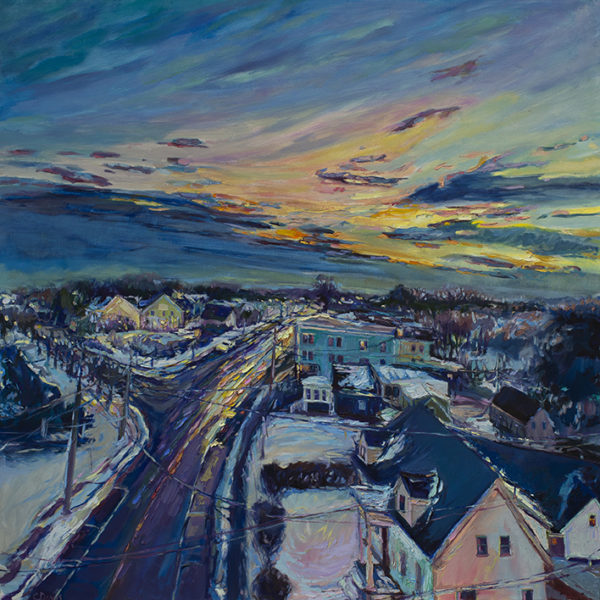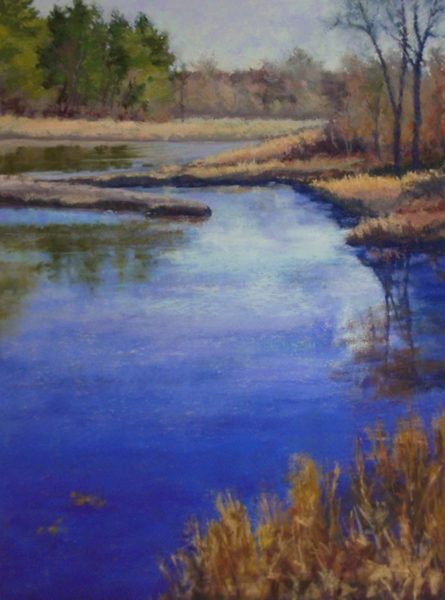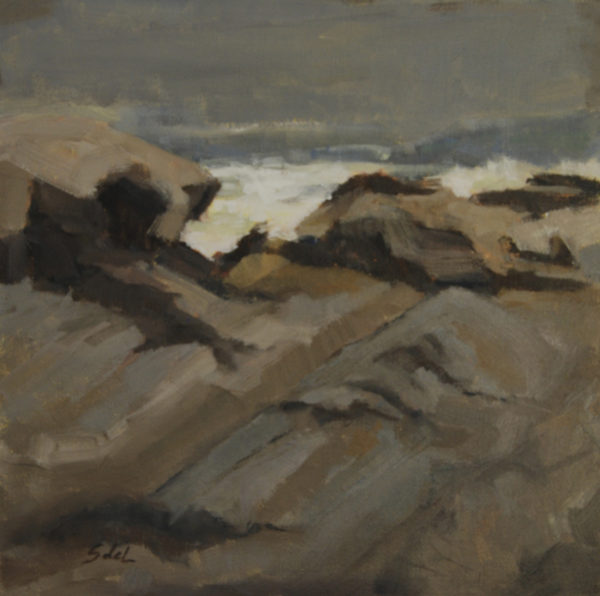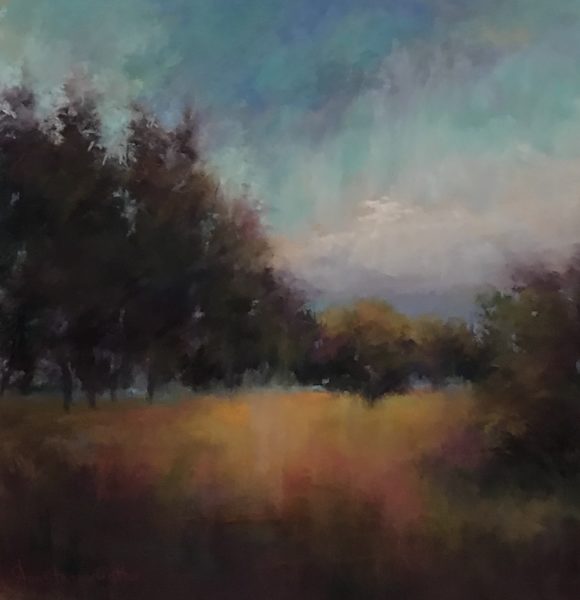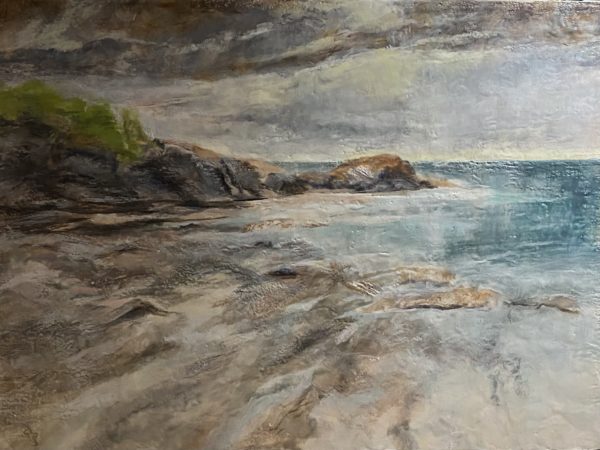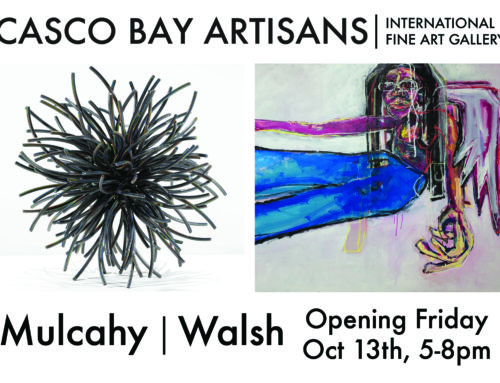Pastel as Process: Mastery of Color
Pastel as an artistic medium traces its history to the 15th century. In the 18th century, pastel became a popular medium for portraiture and landscape subjects. Its foothold in America was solidified in 1883 with the founding of the Society of Painters in Pastel by William Merritt Chase, Robert Blum, and others. Possibly the most famous pastel works are those of Edgar Degas depicting ballerinas in the studio and on stage.
Pastel itself is powdered pigment and a binder in stick form. The binder is usually a low hue and saturation which creates a richness to the color, the closest to dry pigment possible. The working techniques of pastels vary from hard to soft and brand to brand. The dryer the pastel, the richer the color with more complications for keeping that pigment adhered to the surface. With this challenge, artists who work with pastel need to develop an expert understanding of how to work with color and layering in an effort to depict the dynamism of the world around them. Some, take this mastery and translate it into other artistic mediums.
In this show, we are featuring our pastel artists who also work in oil and encaustic. We are juxtaposing their pastel work with these other forms to highlight how one technique informs another. The catalog features all available pastel works from our gallery artists.
Christina Davis (Pastel/Oil Painting)
Making Art is an illuminating process no matter what your medium is. I’m a painter of landscapes and use oil, pastel and acrylic independently in my paintings. If my reaction is strong to a given scene, I explore a sense of expansion and enjoy using a big canvas. I use my arm to bring in larger shapes with a wide brush. Once exhausted from that, I may do a pastel that focuses on another area of the composition or another view. Most of the time a pastel is a start to a larger pastel, or oil painting but not always. I like to flip things around to keep the painting process fresh and exciting to me.
The paintings displayed here at Casco Bay Artisans started with a pastel of the view from a hotel overlooking Rockland. The warm sunrise was amazing juxtaposed by the coolness of the snow and water. Then came the large oil painting of the same area, but of a different view. I decided to paint at that scale to feel what the street, buildings and sky would look like when allowing the viewer to see the scene as though they were entering it themselves. I loved the way it became both a skyscape and landscape pushing in on each other. I am glad I started with a pastel because I could explore color and mark making to encourage a larger idea.
In my studio I have a bay for oil and a bay for pastel and I feel a physical pull to the bay I will use that day. I never know which one I will be doing until I am standing in front of my supplies. I have to keep well stocked up in both.
Suzanne deLesseps (Pastel/Gouache/Oil Painting)
I am a landscape painter. I paint both on location (en plein air) and in the studio. My pastel and oil paintings influence each other as I switch between the two mediums.
I love pastels for their immediacy, vibrancy and richness of color. They allow me the freedom to be spontaneous in my color choices and mark making. My marks are varied – from bold and dense to delicate and lacy. I rarely blend the pastel, preferring to see the texture created by many strokes in different directions built upon each other. This creates a depth and luminosity that I find unique to pastel. The clean, saturated color and layers of the pastel add a
certain spark and life to the painting. There is an intimacy with pastel that happens because of such close contact with the painting surface.
I love oils for their juiciness and tactile quality. Like pastel, different brush strokes add texture and visual interest throughout the painting. Each stroke is determined by the type of brush, the amount of paint on the brush and the pressure used in applying the paint to the canvas. Being able to mix an infinite range of hues is an integral part of bringing light and depth to a painting.
Though the techniques are different, I use the same beginning process for both mediums. I start with a very thin under-painting, roughly indicating the large shapes and values. For pastel, I brush alcohol over a thin layer of pastel to create a colored wash. Likewise with oil, I thin the paint with mineral spirits to block in the main elements of the painting. I prefer a warm tone that will often show through subsequent layers of paint or pastel giving a feeling of light and depth. With pastel I apply many layers of pigment, starting out with bigger and bolder strokes and finally using a very light touch for the last delicate marks and highlights. Working in oil I use the same layering process, saving small details and sparks of light for the end. The rich, saturated colors of the pastel sticks remind me to keep my oil colors clean and bright.
By changing mediums from time to time I find I have a renewed interest in each that allows me to keep evolving as an artist. It’s really the journey that intrigues and drives me.
Anastasia Gatto (Pastel/Encaustic)
My first attraction to pastel was the luscious velvety texture. It is pure pigment with no medium needed to break it down. Pastel is direct and tactile so there is immediate gratification with this medium.
I was drawn to an ethereal style, and found that effect through JMW Turner and sought to translate his method somewhat into my pastels and encaustics. I also admire Monet, Manet, Degas, Sargent, Velasquez, George Inness, and Renoir to name a few which led me to a path of Impressionism or for the techniques that impressed me.
The process of pastel is very different in many ways from encaustic. Texture for pastel can be achieved in a variety of ways such as adding pumice gels to add grit, rougher sanded paper, or fixative to name a few. The encaustic texture is the building up with paint and medium. (Pure pigment with beeswax and resin) After applied it must be burned in (fused) with either a heat gun or blowtorch.
The common bond that pastel has with encaustic is the layering. Pastel is grazing color on top of color which adds depth or a fixative can be used, whereas encaustic shows multiple layers with each fusing.
My transitioning into encaustic has changed to where seascapes and marshes are my desire, as well as continuing to paint the landscape. My primary subject for pastel was landscape, portraits, animals, and still life.
Presently I am painting solely in encaustic, but still love and will never say goodbye to pastel.


